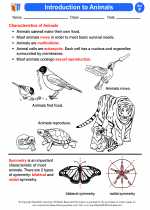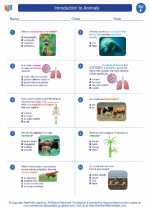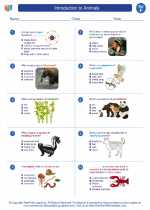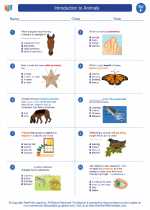Stages of Meiosis
- Prophase I: Chromosomes condense, and homologous chromosomes pair up in a process called synapsis. This is also when crossing over occurs, where genetic material is exchanged between homologous chromosomes.
- Metaphase I: Paired homologous chromosomes line up at the center of the cell, and spindle fibers attach to each chromosome.
- Anaphase I: Homologous chromosomes separate and move to opposite poles of the cell, pulled by the spindle fibers.
- Telophase I: The separated homologous chromosomes reach the poles, and the cell undergoes cytokinesis, resulting in two daughter cells.
- Prophase II, Metaphase II, Anaphase II, and Telophase II: These stages are similar to the respective stages in mitosis, resulting in the formation of four haploid daughter cells, each with half the number of chromosomes as the original parent cell.
Significance of Meiosis
Meiosis is essential for sexual reproduction as it introduces genetic variability through processes like crossing over and random assortment of chromosomes. This genetic diversity is important for the survival of species and contributes to the evolutionary process.Study Guide
- What are the key stages of meiosis, and what happens during each stage?
- How does meiosis differ from mitosis, and what is the significance of these differences?
- Explain the role of crossing over and genetic recombination in meiosis.
- Discuss the importance of meiosis in sexual reproduction and genetic diversity.
- Compare and contrast the characteristics of the parent cell and the daughter cells produced in meiosis.
◂Science Worksheets and Study Guides Sixth Grade. Introduction to Animals
Study Guide Introduction to Animals
Introduction to Animals  Activity Lesson
Activity Lesson Introduction to Animals
Introduction to Animals  Worksheet/Answer key
Worksheet/Answer key Introduction to Animals
Introduction to Animals  Worksheet/Answer key
Worksheet/Answer key Introduction to Animals
Introduction to Animals  Worksheet/Answer key
Worksheet/Answer key Introduction to Animals
Introduction to Animals  Vocabulary/Answer key
Vocabulary/Answer key Introduction to Animals
Introduction to Animals  Vocabulary/Answer key
Vocabulary/Answer key Introduction to Animals
Introduction to Animals  Vocabulary/Answer key
Vocabulary/Answer key Introduction to Animals
Introduction to Animals  Vocabulary/Answer key
Vocabulary/Answer key Introduction to Animals
Introduction to Animals 

 Activity Lesson
Activity Lesson
 Worksheet/Answer key
Worksheet/Answer key
 Worksheet/Answer key
Worksheet/Answer key
 Worksheet/Answer key
Worksheet/Answer key
 Vocabulary/Answer key
Vocabulary/Answer key
 Vocabulary/Answer key
Vocabulary/Answer key
 Vocabulary/Answer key
Vocabulary/Answer key
 Vocabulary/Answer key
Vocabulary/Answer key

The resources above cover the following skills:
LIFE SCIENCE
From Molecules to Organisms: Structures and Processes